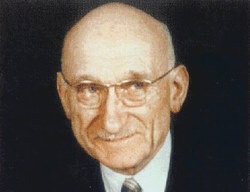The History of the European Parliament
When the European integration first began the “European Parliament” was designed to be a consultative assembly, called the Common Assembly of the European Community of Steel and Coal (ECSC). It comprised national parliamentarians.
1957 Rome Treaty
The ECSC Common Assembly became the European Parliamentary Assembly with the
Rome Treaty (1957). In 1962, the Assembly renamed itself “
Parliament“.
1958 – 1960 Robert Schuman becomes President of the European Assembly
Robert Schuman held the position of president of the European Assembly from 1958 to 1960.
1974 The Paris Summit
The political history of the European Parliament started in 1974, during the Paris Summit: on the initiative of French President Valéry Giscard d’Estaing and German Chancellor Helmut Schmidt, it was decided to elect the European Parliament by direct universal suffrage, which was confirmed by an act adopted by the Council in 1976. The European Parliament then became a true Parliament, provided with real power.
1979 First election of the MEPs by direct universal suffrage
June 1979 : for the first time citizens from the nine member countries elected their MEPs by direct universal suffrage.
Since 1979, the Parliament has benefited from democratic legitimacy on which it relies to increase its powers.
1986 The Single Act
The Single Act (1986) : introduces the “collaboration procedure” between the European Parliament and the Council in the legislative process.
1992 Maastricht Treaty
The European Union Treaty (
Maastricht Treaty, 1992) achieves a major qualitative step forward by introducing the
codecision procedure which transforms the European Parliament into a true legislator on an equal footing with the Council in a certain number of limited areas: for example, the internal market, free movement, education.
1997 Amsterdam Treaty – 2000 Nice Treaty
The Amsterdam (1997) and
Nice Treaties (2000) lead to a significant increase in the number of areas to which the
codecision procédure is applied: the European Parliament decides on an equal footing with the Council in 35 areas (health policy, the fight against fraud, vocational training, certain aspects of the environment policy etc .).
2009 The Lisbon Treaty
With the Lisbon Treaty (2009), the European Parliament now enjoys budgetary, legislative powers and a significant amount of control.
• the new treaty extends the co-decision procedure to 40 new paragraphs and notably to areas as sensitive as the common agricultural policy and policies relative to border control, asylum and immigration.
• With regard to the budget the European Parliament now has the same right to decision as the Council of Ministers and votes on all of the Union’s spending.
• Finally the election of the President of the Commission by Parliament on the proposal of the European Council should take on board the majority that won together with the results of the European elections. The legal framework outlined in the Lisbon Treaty will be a key element in the consolidation of the role played by MEPs.
During the European elections of 2014 the political parties took the initiative of presenting « Spitzenkandidaten », i.e ; each party could put forward a « leading » candidate who would then be the candidate for the position of President of the Commission. The party that wins the most votes would then have its candidate elected to this post. This is initiative that supports parliamentarianism is justified by article 17 § 7 of the Treaty on European Union whereby the election of the President of the Commission has to be undertaken by “taking into consideration the elections of the European Parliament”. In 2014 the European Council suggested that the Parliament elect Jean-Claude Juncker, who was the candidate of the European People’s Party (EPP) which was the winning movement.
For the 2019 elections, the leaders agreed that the European Council could not guarantee the automatic nature of this procedure in advance. The European People’s Party came out ahead in the election, followed by the Party of European Socialists. However, neither of the two Spitzenkandidaten from these parties – Manfred Weber for the EPP and Frans Timmermans for the PES – obtained a majority in the European Council in their favour. After three days of negotiations between leaders, Ursula Von der Leyen, from the EPP, was proposed as President of the Commission by the European Council and elected by the Parliament.
On 31 January 2020, the United Kingdom’s decision to leave the European Union came into force, which altered the internal balance of the European Parliament. The number of MEPs fell from 751 to 705 after 73 UK members left and 27 seats were redistributed among the Member States.
Who was Robert Schuman?
On 9th May 1950, whilst he was Foreign Minister he delivered the famous Schuman Declaration in the Salon de l’Horloge at the Quai d’Orsay; with this speech he defined the means for community integration: Europe will not be made all at once, or according to a single plan. It will be built through concrete achievements which first create a de facto solidarity. This method then served as inspiration for European integration and from then on Robert Schuman was considered the Father of Europe.
Source: Data assembled and put together by the Robert Schuman Foundation, © FRS
Photos : Credit © European Communities, 2014
